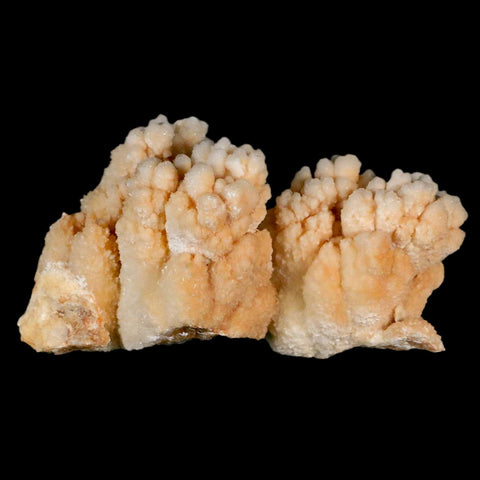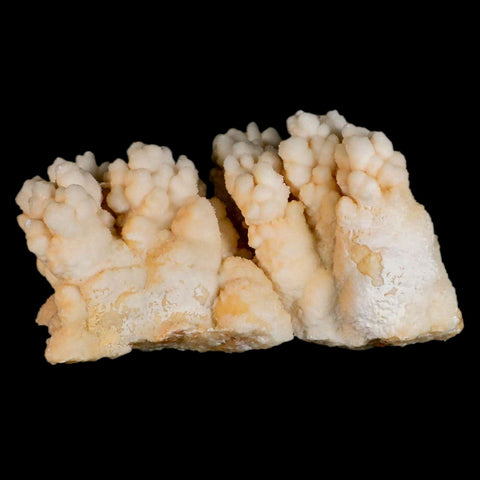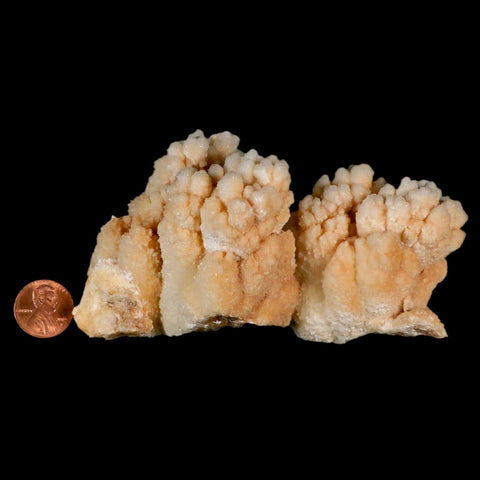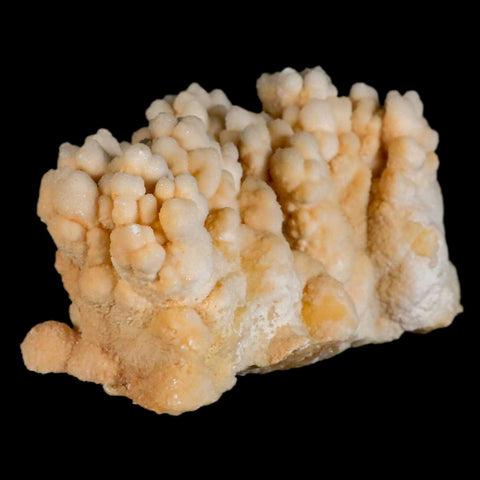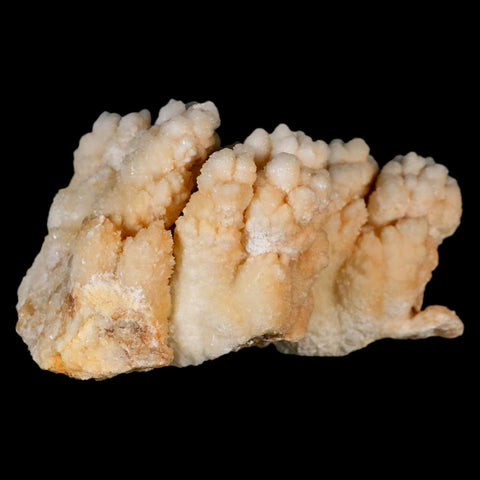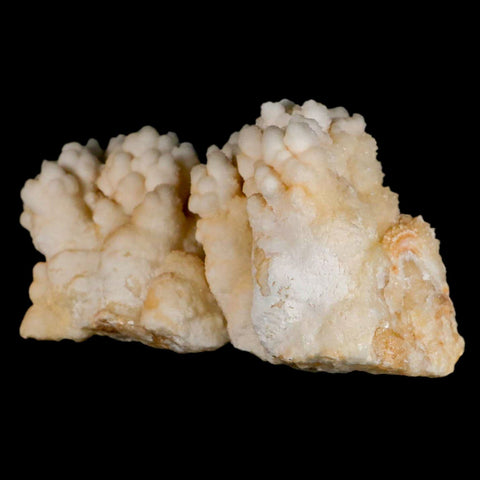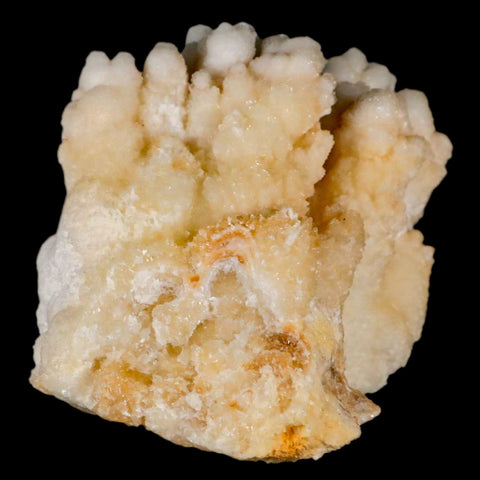4.2" Botryoidal Aragonite Cave Calcite Crystal Cluster Mineral Specimen Morocco
Location: Morocco
Weight: 1 Pound 1 Ounce
Dimensions: 4.2 Inches Long, 2.9 Inches Wide, 2.5 Inches Wide
The item pictured is the item you will receive
Without Aragonite, many of Earth’s organisms could not exist. This is a mineral most invertebrate organisms use to construct their shells and hard parts. So if you have ever admired a colorful seashell, you have already paid tribute to the range of colors Aragonite comes in and indirectly to the ease with which Aragonite forms at the Earth’s surface.
Aragonite and calcite are polymorphs—minerals sharing the same chemical formula but sporting different crystal arrangements. These minerals often coexist, looking so alike that only seasoned geologists find their differences worth noting. Although calcite holds the upper hand in today’s oceans due to its stability, there were powerful epochs when aragonite ruled the seas. Their physical traits are almost twins, making their subtle distinction a captivating challenge for collectors and experts alike.
Calcite is a calcium carbonate mineral with a hardness of 3. It comes in a wide variety of forms and colors and is found on every continent of the world. Calcite makes up the major part of marble and limestone. Yellow Calcite usually occurs in massive rather than crystalline form, and the best specimens come from Mexico.
The name calcite derives from the Greek word “chalix,” meaning lime. This mineral appears in a wide range of colors, including red, green, orange, yellow, blue, pink, clear, black, and white. As one of the most abundant minerals on Earth, calcite forms the foundation of limestone and marble, taking on various shapes and forming in diverse geological settings. Some varieties fluoresce blue or red under UV light. Calcite has been used in cement and mortar production, while its clear, translucent forms have been utilized for gun sights and polarizing microscopes in geology.


